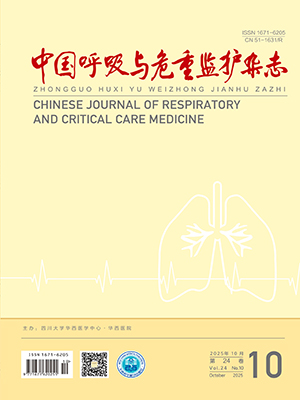Objective To assess the risk factors associated with extubation failure in patients who had successfully passed a spontaneous breathing trial.Methods Patients receiving invasive mechanical ventilation for over 48 h were enrolled in the study,they were admitted into Emergency ICU of Zhongshan Hospital during May 2006 and Oct.2007.A spontaneous breathing trial was conducted by a pressure support of 7 cm H2O for 30 min.Clinical data were prospectively recorded for the patient receiving full ventilatory support before and after the spontaneous breathing trial.Regarding the extubation outcome,patients were divived into extubation success group and extubation failure group.Results A total of 58 patients with a mean(±SD) age of 69.4±12.7 years passed spontaneous breathing trial and were extubated.Extubation failure occurred in 11 patients(19%).The univariate analysis indicated the following associations with extubation failure:elderly patients(78.1±7.9 years vs 67.4±15.1years,P lt;0.05),higher rapid shallow breathing index(RSBI) value(83±12 breaths·min-1·L-1 vs 68±19 breaths·min-1·L-1,P lt;0.05)and excessive respiratory tract secretions(54.5% vs 21.3%,P lt;0.05).Conclusion Among routinely measured clinical variables,elderly patients,higher RSBI value and amount of respiratory tract secretions were the valuable index for predicting extubation failure despite a successful spontaneous breathing trial.
Citation: SHI Dongwei,QU Jieming,TONG Chaoyang,GU Guorong. Risk factors of extubation failure in patients with invasive mechanical ventilation. Chinese Journal of Respiratory and Critical Care Medicine, 2008, 08(5): 367-369. doi: Copy
Copyright © the editorial department of Chinese Journal of Respiratory and Critical Care Medicine of West China Medical Publisher. All rights reserved




